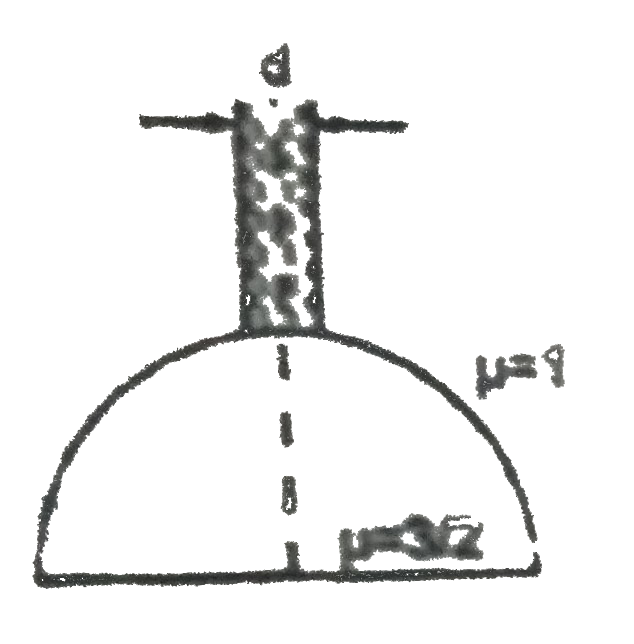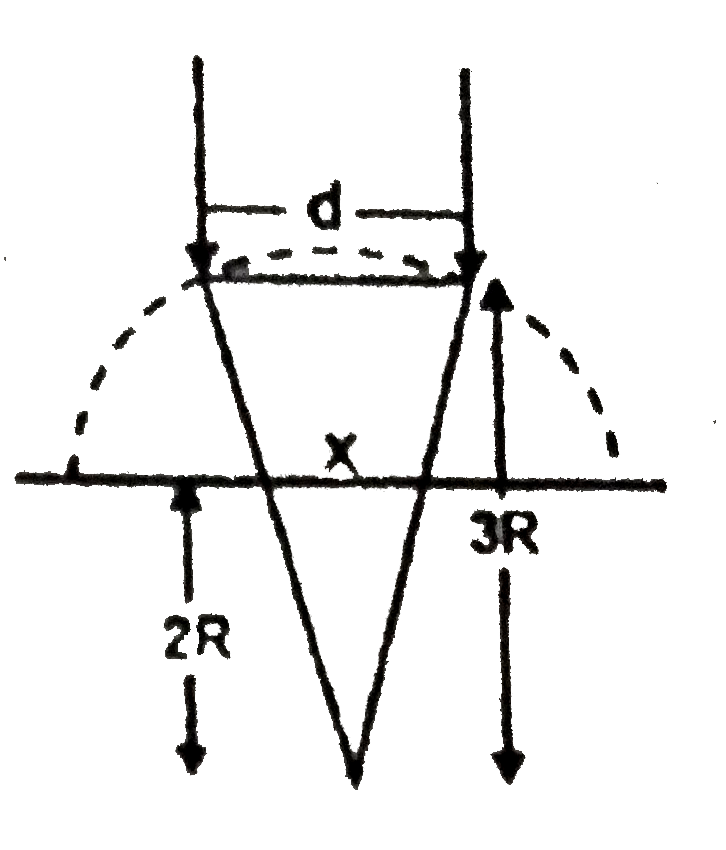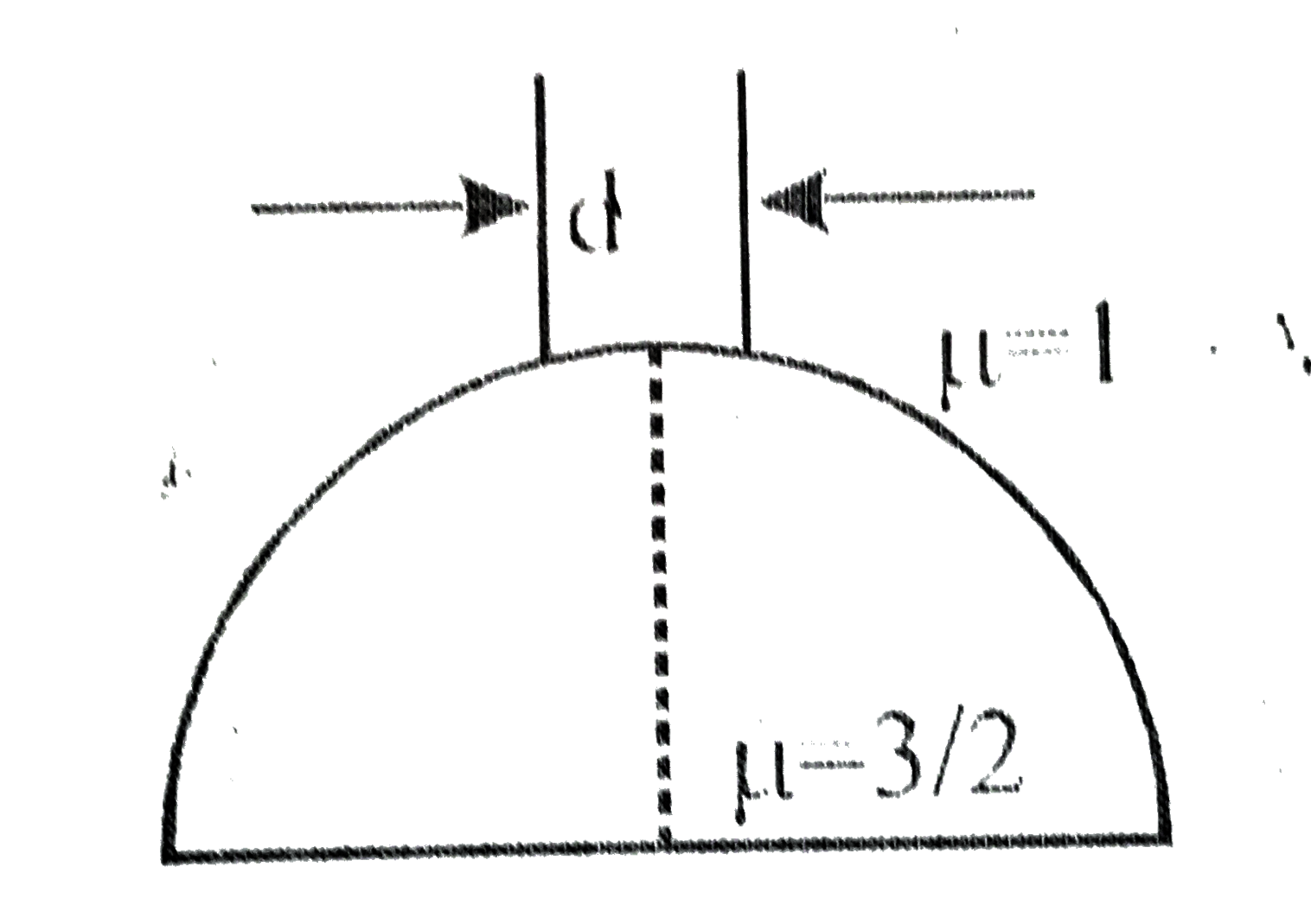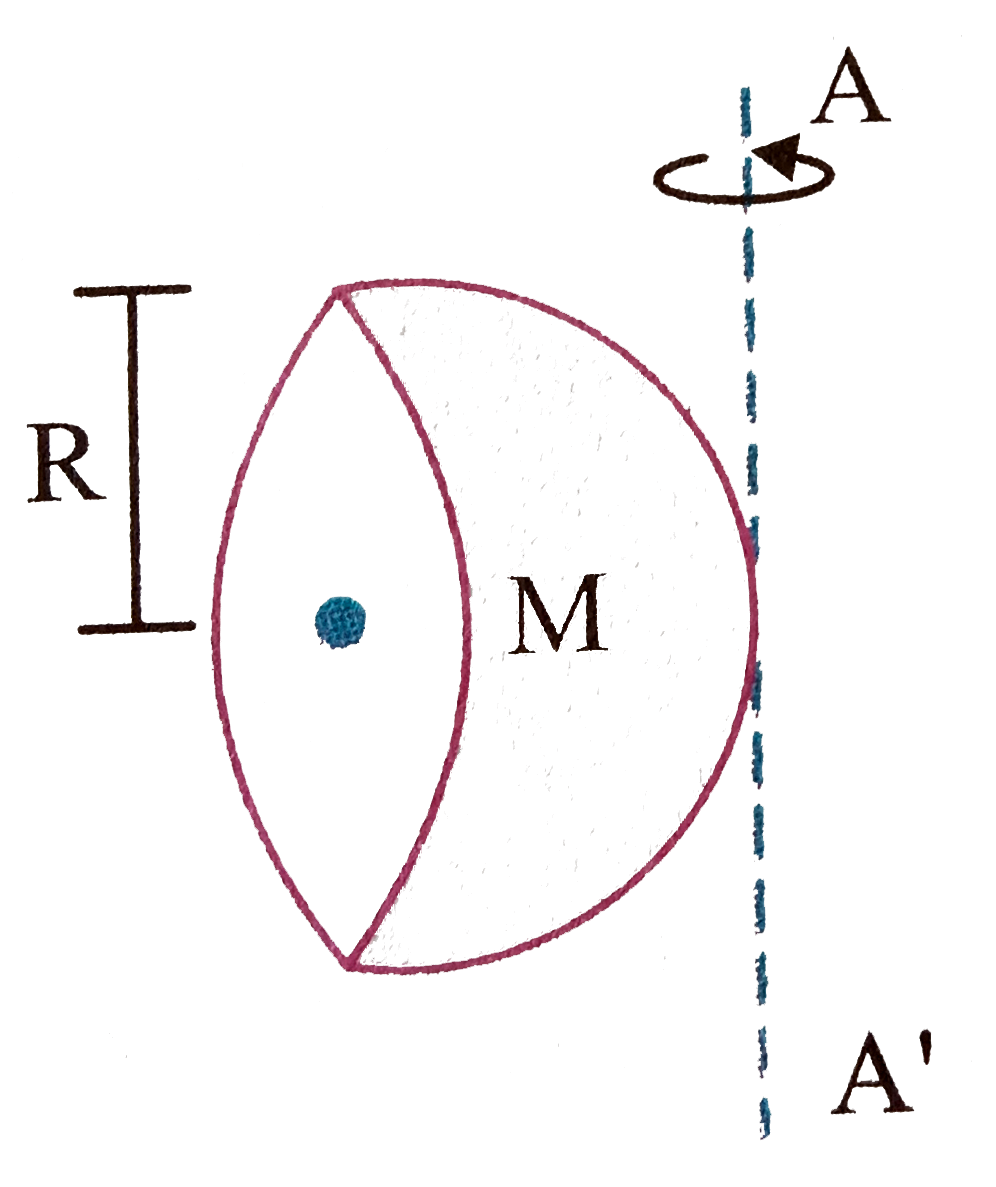A beam of diameter 'd' is incident on a glass hemisphere as shown in the figure. If the radius of curvature of the hemisphere is very large in comparision to d, then the diameter of the beam at the base of the hemisphere will be:

34d
d
d3
23d
The correct Answer is:D
Using refraction formula at curved surface,
32v−1∞=32−1R,32V=12R,V=3R,

From figure x2R=d3R, x=23d
Topper's Solved these Questions
Similar Questions
A beam of diameter 'd' is incident on a glass hemisphere as shown. If the radius of curvature of the hemisphere is very large in comparison to d, then the diameter of the beam at the base of the hemisphere will be :

View SolutionA cone and a hemisphere have equal bases and equal volumes. What is the ratio of the height of the cone to the radius of the hemisphere?
View Solution
Knowledge Check
A beam of diameter 'd' is incident on a glass hemisphere as shown. If the radius of curvature of the hemisphere is very large in comparison to d, then the diameter of the beam at the base of the hemisphere will be
 A34dBdistance between object and screen is 90 cmCd3D23d
A34dBdistance between object and screen is 90 cmCd3D23dIf the total suface area of a hemisphere is 27π square cm, then the radius of the base of the hemisphere is
A9√3 cmB3 cmC3√3D9 cmFind the moment of inertia of a hemisphere of mass M and radius R shown in the figure, about an axis AA' tangential to the hemisphere.
 AI=(920)mR2BI=(1320)mR2CI=(720)mR2DI=(320)mR2
AI=(920)mR2BI=(1320)mR2CI=(720)mR2DI=(320)mR2
Figure shows a transparent hemisphere of radius 3'0 cm made of a material of refractive index 2.0. (a) A narrow beam of parallel rays is incident on the hemisphere as shown in the figure. Are the rays totally reflected at the plane surface ? (b) Find the image formed by the refraction at the first surface. (c) Find the image formed by the reflection or by the refraction at the plane surface. (d) Trace qualitatively the final rays as they come out of the hemisphere.

View SolutionCompute the curved surface area of a hemisphere whose diameter is 14cm
View SolutionIf the radius of a sphere is equal to the diameter of a hemisphere. Find the ratio of volume of sphere to that of the hemisphere.
View SolutionVolume and surface area of a solid hemisphere are numerically equal what is the diameter of the hemisphere?
View SolutionA small sphere D of mass and radius rols without slipping inside a large fixed hemispherical radius R(>>r) as shown in figure. If the sphere starts from rest at the top point of the hemisphere normal force exerted by the small sphere on the hemisphere when its is at the bottom B of the hemisphere.
 .
.
View Solution